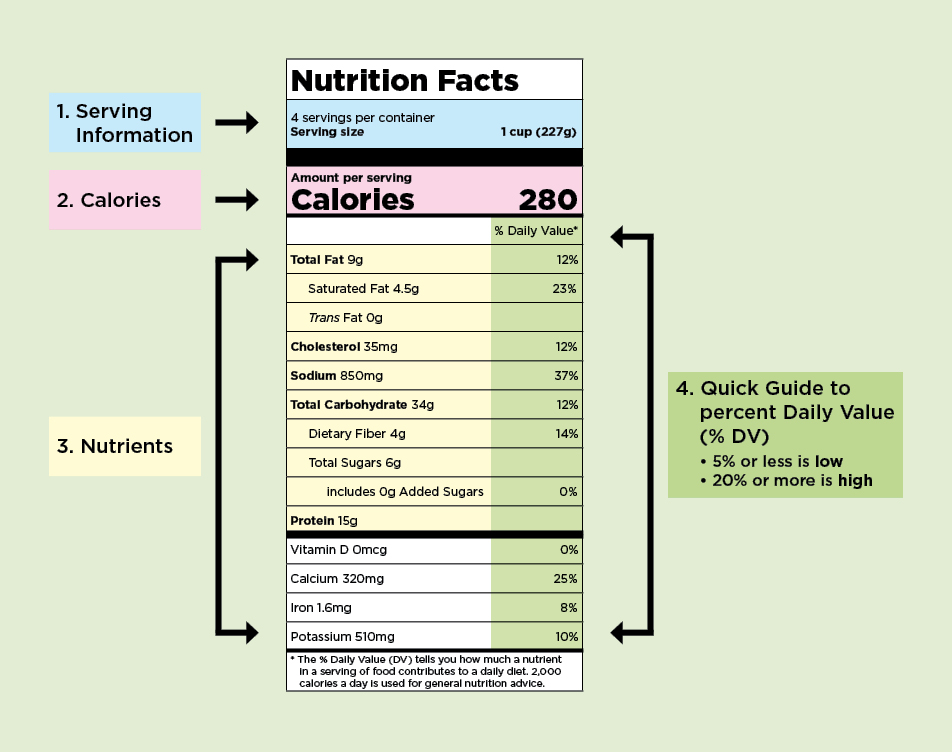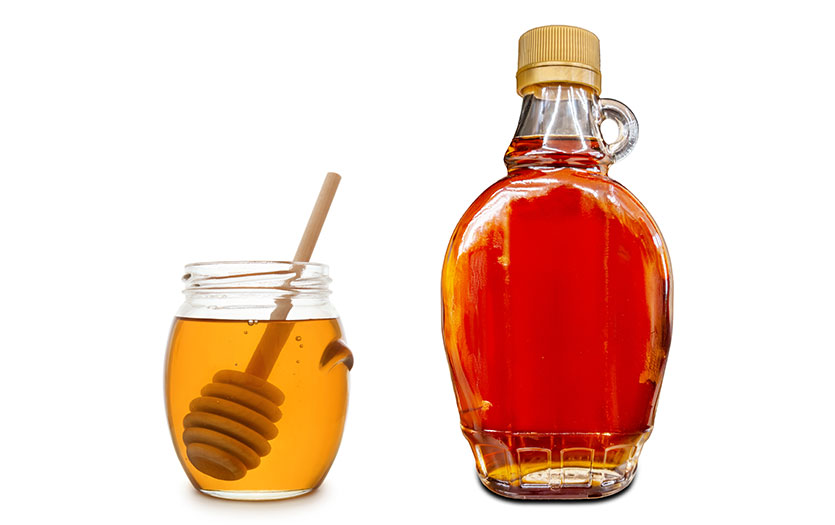
This post was written by Raya Beerbower, Nutrition Services, Parkview Health.
Some of the most important items to look out for on food labels are saturated fat, sodium, sugar and vitamins.
Why? Because according to the American Heart Association,
- Eating foods that contain saturated fats raises the level of cholesterol in your blood. High levels of LDL cholesterol in your blood increases your risk of heart disease and stroke.
- Eating less sodium lowers your blood pressure and/or prevents you from developing high blood pressure (HBP or hypertension).
- Reducing your intake of added sugars helps cut out unnecessary calories and can help improve your heart health and control your weight.
- Eating more vitamins will help you get the beneficial nutrients your body needs without consuming too many calories.
Next to these items on the nutrition label you will find a percent daily value which is listed as % DV. Any item listed as 5% or lower of your daily value is a minor source of that ingredient and anything 20% or higher of your daily value is a good source of that ingredient.
Here is a visual guide provided by the FDA:

You can see from the picture that these nutrients are listed in the following order from top to bottom: Saturated fat comes first, then sodium, added sugars and lastly, vitamins.
Cracking the code on sugars
What's the difference between total sugars and added sugars?
- Total sugars are the total amount of sugars present in the food item (those that are naturally present and those that have been added during processing).
- Added sugars are the sugars that have been added during processing only. These are the ones you especially want to limit because they are nonessential and add unnecessary calories.
An easy rule of thumb is to choose food items with 5 or less grams of added sugar in them daily.
When choosing foods, try to pick those with 5% DV or lower of saturated fat, sugar, and salt.
If the food has vitamins listed on the label (they will not always), try to eat foods that have 20% DV or more listed beside the vitamins and minerals list (like Vitamin A, Calcium, Iron, Potassium, Vitamin C, Vitamin D, etc.).
The best way to get vitamins and minerals is …
One easy way to include more vitamins and minerals in your diet is by eating more fruits and vegetables. Aim to fill half your plate with fruits and veggies at every meal. (If you normally don’t eat fruits or veggies at all, start by adding just one of each every day.)
When choosing fresh fruits and vegetables there are no labels, which is fine because these are full of nutrients and have no added sugars or salt. Fill your plates with fresh, canned, frozen, or dried fruits and veggies—whatever you prefer!
Note: When choosing canned/dried fruits and vegetables, pick “low-sodium," “no salt added," “low-sugar," or “no sugar added” options. When choosing frozen veggies, pick those with no added sauces.



